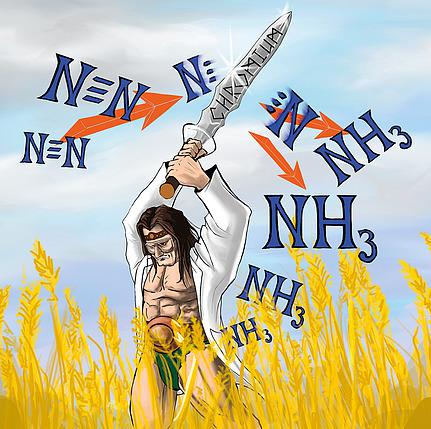当前位置:
X-MOL 学术
›
Eur. J. Inorg. Chem.
›
论文详情
Our official English website, www.x-mol.net, welcomes your
feedback! (Note: you will need to create a separate account there.)
Dinitrogen Activation and Functionalization with Chromium
European Journal of Inorganic Chemistry ( IF 2.2 ) Pub Date : 2020-02-10 , DOI: 10.1002/ejic.201901257 Alexander J. Kendall 1 , Michael T. Mock 2
European Journal of Inorganic Chemistry ( IF 2.2 ) Pub Date : 2020-02-10 , DOI: 10.1002/ejic.201901257 Alexander J. Kendall 1 , Michael T. Mock 2
Affiliation

|
The study of metal‐dinitrogen complexes has lent valuable insight into the nature of dinitrogen (N2) reduction to ammonia (NH3), known as “nitrogen fixation.” Even so, understanding this difficult transformation continues to be an elusive goal for chemists. The N2 chemistry of chromium (Cr) is exceptional for its diversity, rarity, and richness of depth. Hans Karsch opined in 1977 that “Almost all transition metals are known to form complexes with molecular nitrogen, but in the case of some metals ‐ notably chromium ‐ the examples are few and far between.” Although that sentiment hasn't changed much in 42 years, recent advances in the field of Cr‐N2 chemistry have begun to illuminate that elusive relationship. Herein we cover the theory and experimental basis for chromium's coordination, activation, reduction, and catalysis of N2 to NH3. An emphasis will be placed on work towards understanding catalytic systems for chromium mediated dinitrogen reduction.
中文翻译:

铬的二氮活化和功能化
金属二氮配合物的研究对将二氮(N 2)还原为氨(NH 3)的性质提供了宝贵的见解,这被称为“固氮”。即便如此,了解这种困难的转化仍然是化学家们难以实现的目标。铬(Cr)的N 2化学因其多样性,稀有性和深度丰富而非常出色。汉斯·卡尔施(Hans Karsch)在1977年指出:“已知几乎所有的过渡金属都会与分子氮形成络合物,但对于某些金属(尤其是铬),例子很少且相差甚远。” 尽管这种情绪在42年内并没有太大变化,但Cr-N 2领域的最新进展化学已经开始阐明这种难以捉摸的关系。在这里,我们涵盖了铬对N 2至NH 3的配位,活化,还原和催化的理论和实验基础。将重点放在理解铬介导的二氮还原催化体系的工作上。
更新日期:2020-02-10
中文翻译:

铬的二氮活化和功能化
金属二氮配合物的研究对将二氮(N 2)还原为氨(NH 3)的性质提供了宝贵的见解,这被称为“固氮”。即便如此,了解这种困难的转化仍然是化学家们难以实现的目标。铬(Cr)的N 2化学因其多样性,稀有性和深度丰富而非常出色。汉斯·卡尔施(Hans Karsch)在1977年指出:“已知几乎所有的过渡金属都会与分子氮形成络合物,但对于某些金属(尤其是铬),例子很少且相差甚远。” 尽管这种情绪在42年内并没有太大变化,但Cr-N 2领域的最新进展化学已经开始阐明这种难以捉摸的关系。在这里,我们涵盖了铬对N 2至NH 3的配位,活化,还原和催化的理论和实验基础。将重点放在理解铬介导的二氮还原催化体系的工作上。











































 京公网安备 11010802027423号
京公网安备 11010802027423号